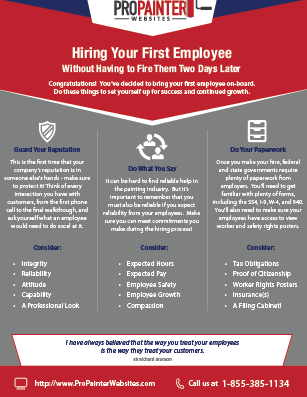Examine The Role Of Seasonal Factors In The Success Of Business Exterior Painting And Discover The Best Times To Protect Long-Term Outcomes For Your Job
Examine The Role Of Seasonal Factors In The Success Of Business Exterior Painting And Discover The Best Times To Protect Long-Term Outcomes For Your Job
Blog Article
Post Author-Carlson Rosendal
When you're planning a commercial external painting task, seasonal variables can make or break your outcomes. You'll wish to take into consideration how temperature and moisture impact paint application and drying times. Picking on front page can ensure your paint sticks appropriately and lasts longer. Yet which seasons are really the most effective for this sort of job? Allow's explore the key elements that can impact your job's success.
The Impact of Temperature on Paint Application
When you're intending a business outside paint job, the temperature can substantially affect just how well the paint adheres and dries.
Preferably, you want to paint when temperature levels range in between 50 ° F and 85 ° F. If it's also chilly, the paint might not heal properly, resulting in issues like peeling off or splitting.
On the flip side, if it's as well hot, the paint can dry too promptly, avoiding appropriate bond and causing an uneven surface.
You need to additionally think about the moment of day; early morning or late afternoon offers cooler temperature levels, which can be extra favorable.
Always examine the producer's suggestions for the particular paint you're making use of, as they frequently supply advice on the suitable temperature range for optimal outcomes.
Humidity and Its Impact on Drying Times
Temperature isn't the only ecological variable that affects your industrial exterior painting job; humidity plays a significant duty as well. High moisture degrees can reduce drying out times considerably, affecting the total top quality of your paint job.
When the air is saturated with moisture, the paint takes longer to cure, which can result in concerns like bad bond and a higher risk of mildew growth. If Suggested Webpage on an especially moist day, be gotten ready for extensive wait times between layers.
It's important to check local climate condition and strategy appropriately. Preferably, go for moisture degrees between 40% and 70% for optimum drying.
Keeping these consider mind guarantees your task stays on track and delivers a lasting surface.
Best Seasons for Commercial Exterior Painting Projects
What's the most effective season for your business external paint tasks?
Spring and very early fall are normally your best bets. During these periods, temperature levels are mild, and moisture levels are often lower, developing optimal conditions for paint application and drying out.
Avoid summertime's intense heat, which can create paint to dry also quickly, bring about bad attachment and coating. In a similar way, winter's chilly temperature levels can prevent correct drying out and curing, taking the chance of the durability of your paint work.
Aim for days with temperature levels in between 50 ° F and 85 ° F for optimal results. Keep in mind to check the regional weather prediction for rain, as wet problems can ruin your task.
Preparation around these aspects ensures your paint task runs smoothly and lasts longer.
Conclusion
In conclusion, preparing your business outside painting projects around seasonal considerations can make a considerable difference in the result. By scheduling work throughout the perfect temperatures and moisture degrees, you'll ensure much better adhesion and drying out times. Remember to keep an eye on local weather forecasts and pick the right time of year-- springtime and very early loss are your best choices. Taking these actions will aid you achieve a resilient and professional surface that lasts.
